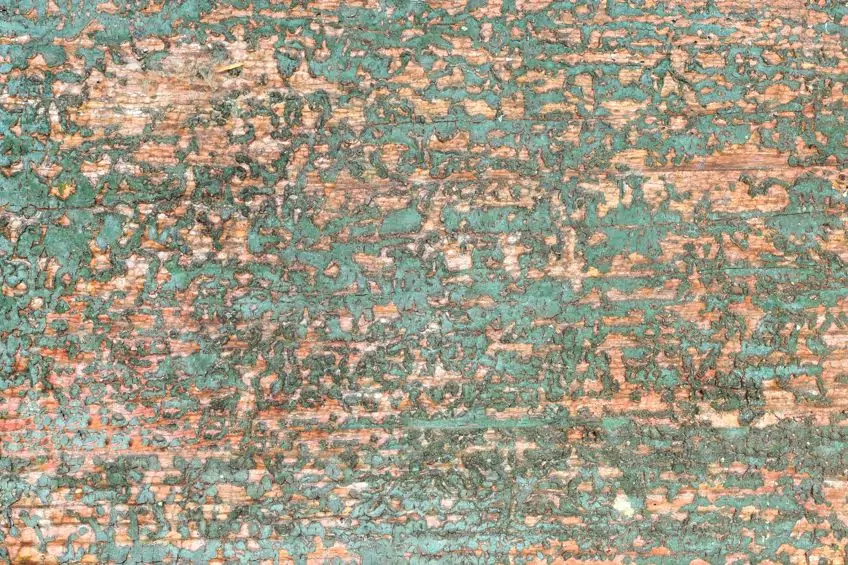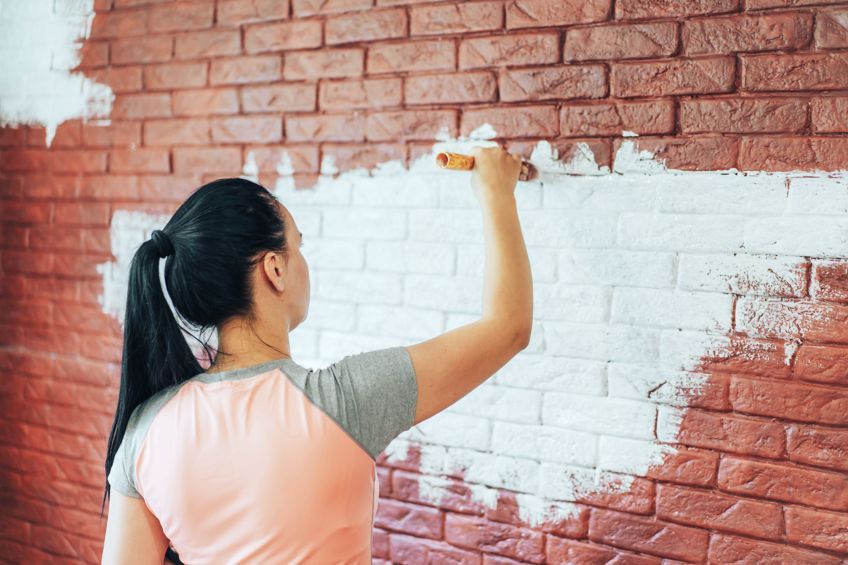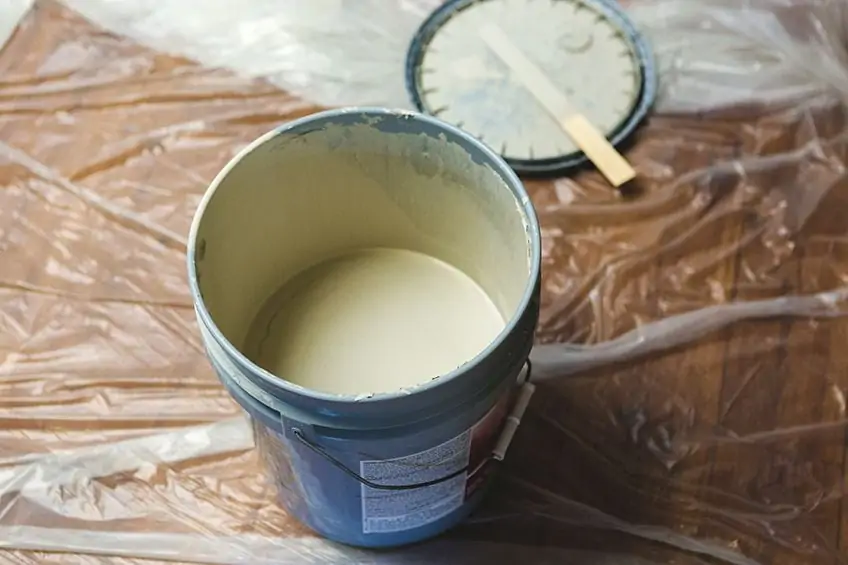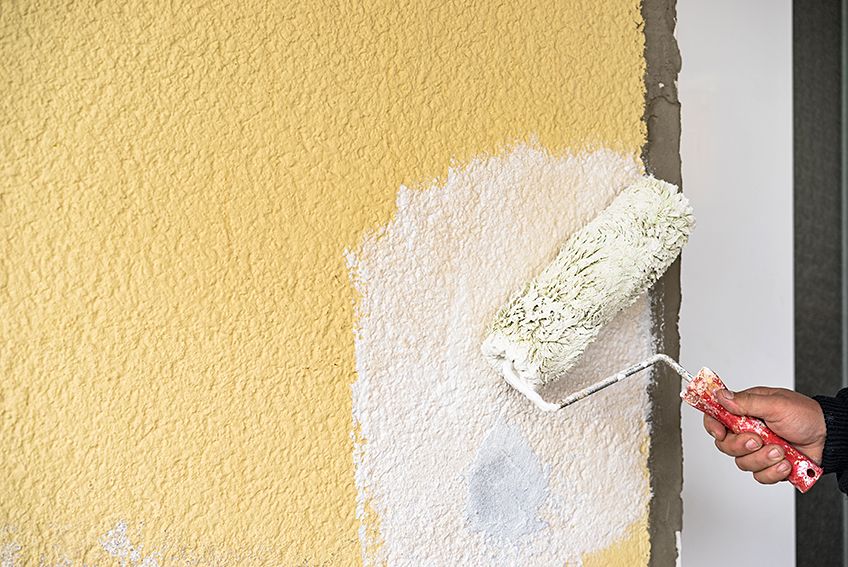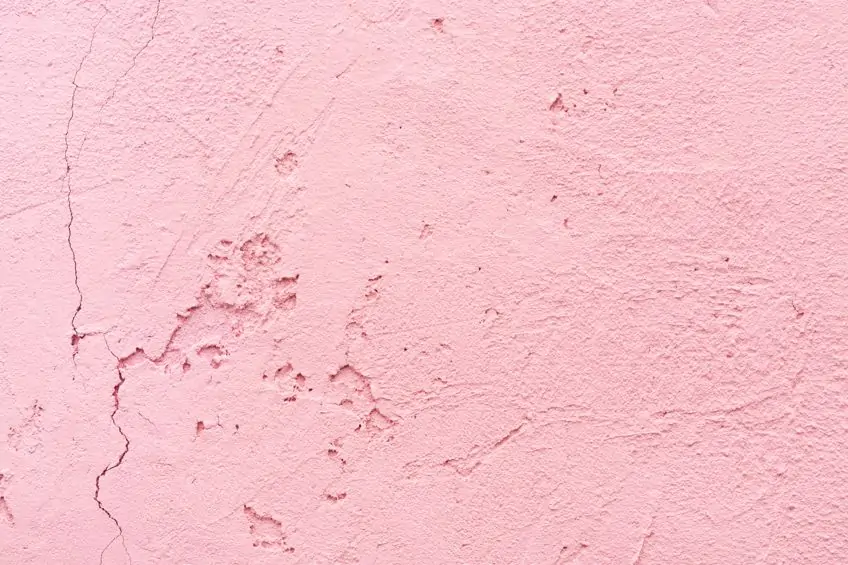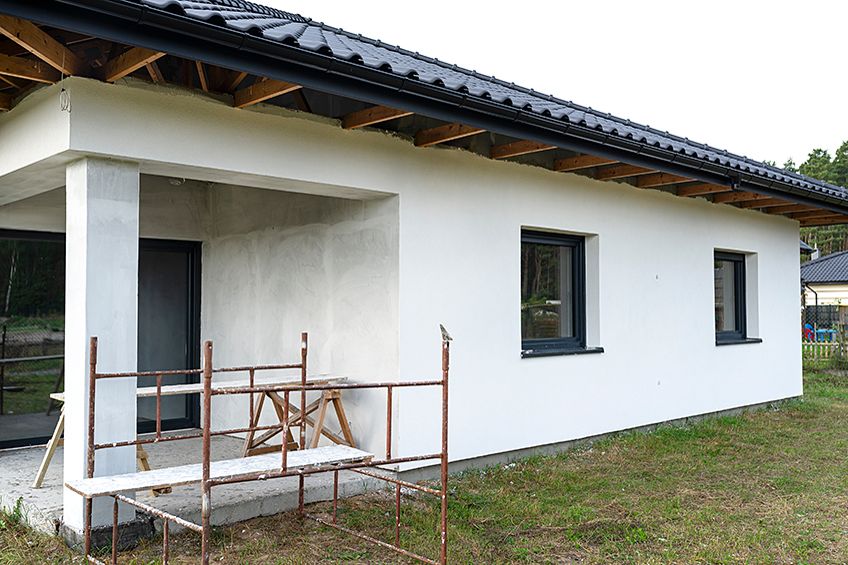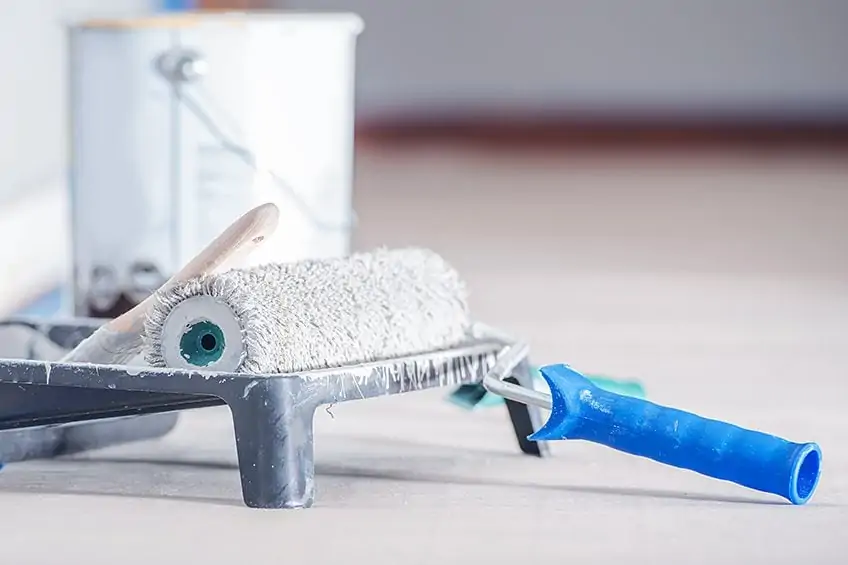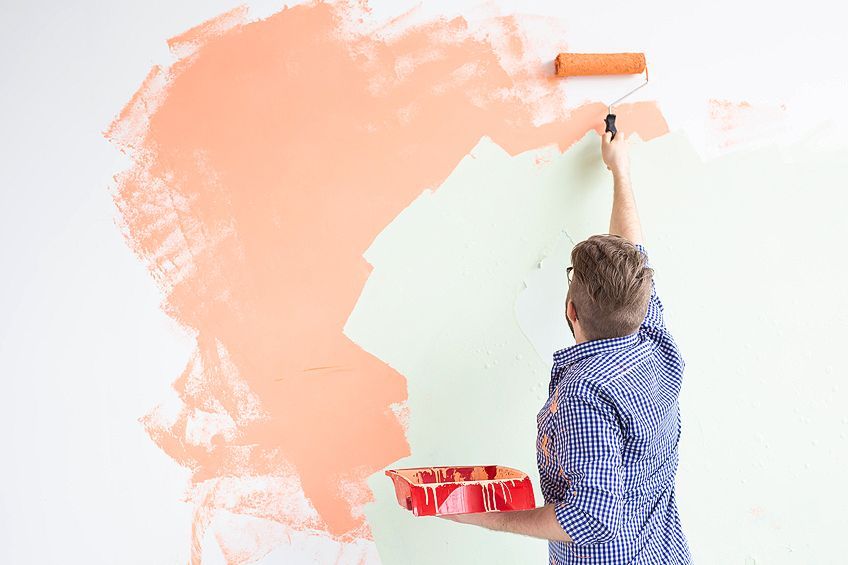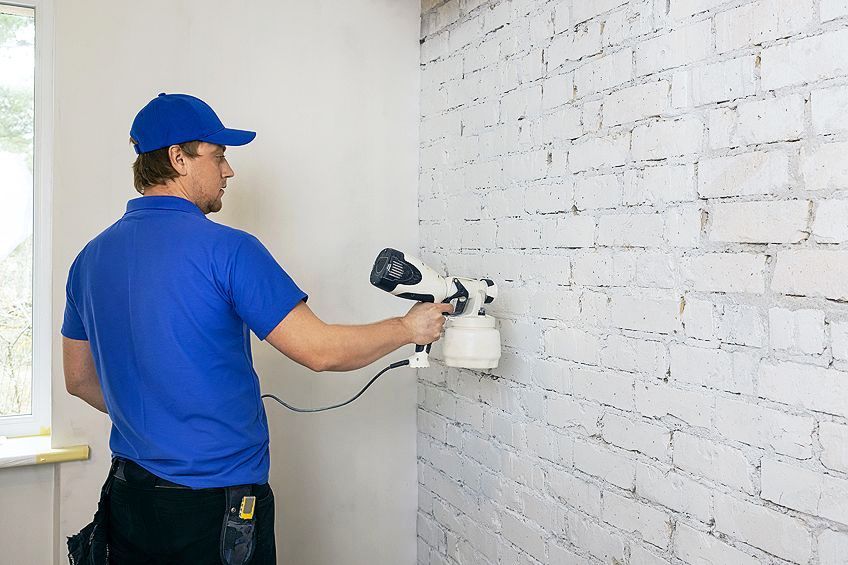Best Paint for Stucco – Exploring the Best Stucco Paint Brands
This post may contain affiliate links. We may earn a small commission from purchases made through them, at no additional cost to you. You help to support resin-expert.com
Stucco is a wonderfully durable and low-maintenance coating for walls that is naturally fire-resistant. Choosing to paint stucco walls will make them last even longer by protecting them from prolonged exposure to the elements. However, any old paint will not do. In this article, we will take a look at the nature of stucco and the best types of paints for stucco. We will also look at product recommendations as well as give an overview tutorial of how to paint stucco. Read further to find out more!
Table of Contents
What Is Stucco and What Paint Should I Use?
Stucco is a building material that is usually used as a decorative, textured coating on walls. Stucco contains sand or aggregate, cement, and water. Stucco is very durable and offers a high level of resistance to the ultraviolet rays of the sun as well as the weather in general. However, over time, the weather can take its toll on stucco.
Sometimes other materials like fiberglass and acrylics are added to the stucco mixture to increase the strength, however, the easiest way to increase the longevity of stucco is to paint it. The best paints for stucco provide protection from wet weather and the harsh ultraviolet rays of the sun. Without sufficient protection, your stucco will not last as long.
Choosing the best paints for stucco can be a difficult process but with a little guidance, you will be able to confidently select the ideal paint to suit your needs.
Types of Paints for Stucco
When it comes to the ideal paint for stucco you should opt for exterior acrylic, masonry, or elastomeric paint. These plants can protect your stucco and waterproofing and sealing them off from the elements. Before we look at the best exterior paint for stucco let us take a closer look at the three different types of paint that suit stucco.
Acrylic Paint
Acrylic paint is the most permeable of the three paints. This means the paint is breathable. Stucco is breathable by nature and using permeable paint like Acrylic is a great choice. This is a common choice of contractors and other professionals, however, it is not as durable as elastomeric and will have to be reapplied every few years. Acrylic paint is affordable, it is easily applied and cleanup is a breeze with water. There is a large array of colors available in acrylic so at the worst you will be spoilt for choice.
PROS
- Affordable
- Easy to recoat
- High permeability
- A wide array of color options
CONS
- Does not last as long as elastomeric
- Is not good at covering imperfections
Masonry
Specialized masonry paints come in limited colors and the coverage is not as good as acrylic or elastomeric but these paints are designed specifically for bonding to masonry such as concrete, brick, and of course stucco. Being a specialized product, masonry paints are generally more expensive than acrylic. These paints are more resistant to mold and mildew and they also have a higher water resistance than acrylic. You can not go wrong selecting a specialized paint such as masonry paint but here is another list of pros and cons to help you make up your mind.
PROS
- Specifically designed for materials like stucco
- Bonds well to stucco
- Mid-range pricing
CONS
- Not as permeable as acrylic
- Limited color options
Elastomeric
Elastomeric paint is extremely flexible and has high water resistance. Elastomeric paints are a very thick consistency that works wonders at filling thin cracks in stucco. It dries to a hard rubber-like substance which can take up to 72 hours to fully cure. This paint can last up to 7 years longer than acrylic paint. This paint has the lowest permeability of acrylic and masonry paint. It can trap moisture which could lead to mold growth or damage to the stucco. It is not advised to paint this paint over acrylic or masonry paint.
PROS
- Ideal for covering hairline cracks
- High water resistance
- Covers up imperfections well
CONS
- Most expensive
- Lowest permeability
- Not ideal for recoating over acrylic or masonry paint
Summary of Different Available Stucco Paints
Now that you have read some of the pros and cons of the different types of paint for stucco, we have provided a small and easy-to-understand summary table below.
| Properties | Acrylic Paint | Masonry Paint | Elastomeric Paint |
| Affordability | ✔ | ✔ | ✘ |
| Durability | ✔ | ✔ | ✔ |
| Permeability | ✔ | ✔ | ✘ |
Which Stucco Paint Brand Should I Buy?
Now that we have covered the different types of paints that are ideal for stucco, you are ready to select and purchase the paint. However, you may be feeling overwhelmed with the number of options available. There are a lot of brands out there all claiming to be the best which can make things a little confusing. To cut through the noise we have created a shortlist for the highest-rated brands and their best offerings for stucco.
Best Masonry Paint for Stucco: KILZ Interior & Exterior Self Priming Stucco Paint
Do not fret over which primer to use on stucco as this all-in-one paint is self-priming. Kilz Self Priming Masonry Paint is ideal for both interior and exterior stucco. It is water-based which makes for easier cleanup. Kilz has made this paint with incredible adhesion and water-repelling properties. It is resistant to mildew and hides imperfections in stucco very well. Kilz Self Priming masonry paint is easy to apply with a roller or an airless spray. This is an ideal choice for the choosy homeowner as it is one of the best paints for stucco!
- High-quality acrylic latex paint is water-based for versatility
- Provides excellent adhesion and superior coverage
- Suitable for use on both interior and exterior surfaces
PROS
- Easy to apply
- Mildew resistant
- Water repellent
- Permeable
- Ideal for both interior and exterior stucco
CONS
- Thin consistency
Most Versatile Stucco Paint Brand: MONTAGE Signature Interior & Exterior Eco-Friendly Paint
Montage Signature Interior and Exterior paint offer versatility, superior coverage, and tough protection. It is easily applied with a brush or roller and has good water-repelling properties. This paint also defends against mold and mildew and makes for easy cleaning. Montages paints come with a 10-year warranty are tough and long-lasting. Being water-based cleanup is easy with just water. Montages are committed to using pollutant-free materials in their manufacturing process however this product is not low in VOC.
- Very versatile paint suitable for interior and exterior surfaces
- Provides superior coverage and protection for all surfaces
- Eco-friendly, high quality paint is free from pollutant materials
PROS
- Superior coverage and protection
- Easily applied
- Ideal for both interior and exterior use
- Affordable
CONS
- Not low in VOC
Best Acrylic Paint for Stucco: MICROBLEND Exterior Paint and Primer
Yet another high-quality combination of paint and primer product. Microblend has formulated an exterior paint that withstands some of the harshest weather. From protection against UV rays, wind, and snow, Microblend Exterior Paint and Primer have you covered. This paint is low in volatile organic compounds which makes it safer to use than other stucco paint brands. Microblend offers a wide array of color options that will help find the exact one that suits your taste. Its thick formulation is capable of covering up imperfections in the stucco.
- Professional quality, low VOC, low odor paint, and primer
- Offers exceptional hide and self-leveling additives
- Our water-based acrylic resin formula cures hard for durability
PROS
- Thick consistency
- Great all-round weather protection
- Low in VOC
- Offers good coverage
- A wide array of color options
CONS
- May show up brush marks
Other Factors to Consider When Selecting Paint for Stucco
Now that you have been introduced to some of our favorite paints for stucco, there are a few other factors that you may be interested in learning about to help you make the best choice when selecting paint. Understanding all these factors will help you to make the best decision, however, it is a good idea to chat with neighbors or people in your area with painted stucco walls as they may have some valuable information with regards to what works and what does not within the particular climate of your area.
Volatile Organic Compounds
VOCs are chemicals that are usually used in the manufacturing of exterior paints. These chemicals can cause nausea, breathing issues, headaches, liver, and kidney damage. You may not think this is an issue if you plan on working outside in the fresh air, however it is advised that you use the appropriate safety gear such as a respirator and safety goggles.
There are paints available on the market and are usually sold as eco-friendly alternatives.
Color Longevity
How long an exterior paint keeps its color may be a concern for you. One thing to bear in mind is that darker colors will seem to fade quicker than lighter colors. Titanium dioxide is a paint additive that can help darker shades keep their color longer. Another thing to bear in mind is that acrylic paints stay brighter longer as they permeate deeply into the stucco, unlike elastomeric and masonry paints.
Climate Compatibility
Humidity and temperature can affect the drying and curing time of your stucco paint. Luckily for us, there are paints available that have no problem drying in 36 degrees Fahrenheit temperatures and other paints that do just as well in areas where there are high humidity levels.
Refer to the manufacturer’s information sheet regarding climate compatibility or give the manufacturer a call if you are unsure.
Durability
Durability is an important concern when selecting paint for stucco. Viscosity is a good indicator of good coverage and how durable a paint will be in the long run. Thick paints can also bridge hairline cracks. Elastomeric paints have this quality. There are many finishes available such as gloss and matte.
More matte finishes are better at covering up imperfections. High gloss finishes can highlight imperfections. Multiple coats of paint make the coating more durable. If you have multiple layers of old paint it is wise to strip these old layers before applying a new coat.
Weather Proofing
Paints that are designed for exteriors are formulated in such a way that helps the paint stand up to harsh weather conditions like rain, the ultraviolet rays of the sun, and rising and falling temperatures. Elastomeric paints have the highest waterproofing capability as well as temperature and ultraviolet resistance. It is a good idea to use a primer before applying elastomeric paints. Masonry paints are great too however, they have less UV resistance than elastomeric paints.
Acrylic paints have great all-around weather resistance properties.
How to Paint Stucco
If you have made it this far you are fairly well versed in what constitutes the best exterior paint for Stucco. You have sifted through all the options and have selected what you feel is the best stucco paint brand. You are now ready to paint! But where and how does one start?
This section will help you through the process of painting stucco by providing an overview of the process. It is always a good idea to refer to the manufacturer’s instructions before slapping on the paint. Take your time, prepare the surface and work methodically and you will be enjoying your freshly painted walls soon enough!
Surface Preparation
Preparing stucco is very important if you want the coat of paint to last. Painting over chipped and peeling paint is not ideal. It is best to remove old flaky paint through sanding or using a wire brush, or push broom. If you are painting interior stucco be sure to use a drop cloth to avoid ruining your furniture and flooring.
Repair any large cracks in the stucco with stucco repair filler before allowing it to cure for at least 15 days before washing the stucco. To remove any dust and debris using a power washer if dealing with exterior stucco and a vacuum cleaner if working indoors.
Wait for the stucco to dry to the touch before applying the paint. Depending on the stucco paint brand you have settled on it may or may not have a built-in primer. If not, it is a good idea to apply a primer for stucco before applying your paint. If you have an all-in-one primer paint you can go ahead and apply the paint with a brush or roller. An airless sprayer may be a bit more effective because of the textured nature of stucco.
Painting Stucco
If you do not have access to an airless sprayer, a thick-nap roller is also really effective in getting into all the textured divots and crevices. Use masking tape to protect areas you do not want to paint, such as where the stucco meets the driveway. Cut in the edges of the stucco walls with a brush before attaching the larger areas with your roller. Work methodically from one stride of the wall to the other.
The above method applies to the application of the primer as well as your chosen paint. If you are using a primer, let it dry before applying the paint. Always remember that a few thin coats of paint are better than a single thick coat. Check the weather report to avoid having a rain shower ruin all your hard work. Paint exteriors in warmer climates it is advised that you begin painting in the early morning to avoid having to work in the midday heat.
Coverage and Curing Time
Curing time will vary from product to product. Always read the manufacturer’s instructions for the best results. This is also the case with coverage. The manufacturer will usually provide a rough indication of how much paint you will need per square foot of stucco. Acrylic paint offers greater coverage than elastomeric and masonry paint.
The porosity of the stucco can also affect the coverage as very porous stucco will absorb more paint.
Concerning curing time, elastomeric paint will take the longest to cure in comparison to masonry and acrylic paint. Curing time will also be affected by humidity and temperature so it is always best to use the information provided by paint manufacturers as a guideline.
Our Tips and Tricks for Painting Stucco
Stucco painting is not one of the most common painting methods, so you may be unfamiliar with some parts of the process and some of the pitfalls. Here, we provide you with some of our best tips and tricks to help you through the stucco painting process.
- The importance of selecting a quality primer for stucco can not be expressed enough. Selecting a good primer can make or break the adhesion of the paint. The only way to skip out using a primer is to opt for a combination of paint and primer.
- It can be tempting to rush through the painting process but it is best to avoid applying one heavy coat of stucco. It is best to paint on multiple thin coats. This will ensure a stronger coating and better coverage.
- An airless sprayer is an ideal way to apply paint to stucco. The Textured nature of stucco makes it difficult to paint. There are affordable versions available but you can also consider renting a professional one.
- To improve paint adhesion, a general rule is to never apply paint to dirty or wet stucco. Furthermore, never paint in extremely humid, wet, or windy conditions. These are a few ways to avoid adhesion failure.
- If an airless sprayer is not an option, use a roller with a thick nap. Coupled with a painter’s grid it can be very efficient when painting stucco. Paintbrushes should only be used on detailed areas and for cutting in the edges of the stucco.
- Always be sure to wait until the first thin coat of paint has dried properly before applying a second coat. The same applies when painting over the primer for stucco. Patience will pay off in the end.
- Do not paint over large cracks in stucco. Fill large cracks with a filling compound and putty knife. For cracks 1/16 of an inch try using masonry caulk. Hairline cracks can be bridged using certain stucco paints brands.
When searching for the best paint for stucco, always keep in mind that the best paints are elastomeric, masonry, and acrylic paint. These paints offer the greatest level of durability. Applying a primer for stucco is of prime importance. Unless however, you have opted for a paint that is formulated with a primer and paint combination. Always refer to the manufacturer’s instructions for use. View the curing times and coverage indications as mere guidelines as other factors like climate and the condition of the stucco will sway these indications.
Frequently Asked Questions
Do I Have to Apply a Primer for Stucco?
Applying a primer for stucco before painting is ideal as it increases the adhesion of the paint to the stucco. Paint primers can also cover up imperfections in the stucco. The main function of a primer is to extend the life of your paint so it is best not to skip this step.
Will Paint Cover Cracks in Stucco?
Some of the best paints for stucco can bridge fairly large cracks in stucco. However, it is not ideal. It is better to fill large cracks in the stucco with a specialized filler. This being said, using paint to fill hairline cracks is acceptable so long as the paint is designed for this purpose.
Can I Paint Over Old Stucco Paint?
Painting over old stucco paint is doable. However, it is recommended that you remove old flaky paint with sandpaper, a wire brush, or a push broom. Using a power washer is also recommended to remove the dust and debris after you have sanded. If you are working indoors use a vacuum cleaner with a dust attachment instead.
What Is the Best Paint for Stucco?
The best paint for stucco falls within three categories. Acrylic, masonry, and elastomeric paints are ideal for painting stucco. They offer great coverage and durability. Each of these types of paint has its pros and cons. It is best to speak to a professional if you are not sure which one of these paints to choose.
How Long Should I Wait Before Painting Newly Installed Stucco?
It is less than ideal to paint new stucco before it has dried completely. A minimum of seven days is recommended however ideally you will want to allow four to six weeks for the stucco to cure. At this point, the stucco will be at its strongest and will be ready to accept paint.
Why Should I Paint Stucco?
The best paints for stucco offer weatherproofing benefits such as waterproofing and UV protection, both of which can help your stucco last for years to come. Choosing to paint stucco is entirely up to the owner but it is a process that is recommended by professionals.
When should I Call a Professional?
If you are feeling out of your depth or if you are dealing with stucco that is in a terrible condition it may be an idea to seek professional advice. Stucco can reach the point where it is beyond repair and may have to be removed.


